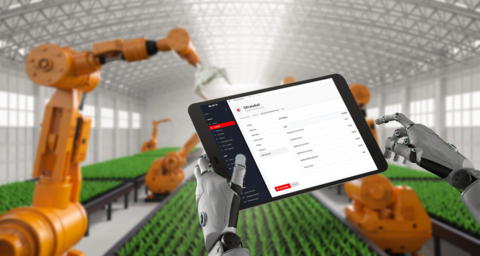It's a Crossover article! Our very first. We're pairing together our Left Hand, Right Hand series with Unlocking Efficiency and Engagement. Who's kidding who, this was going to happen sooner or later.
Cross-Functional Collaboration is nothing new, yet its lack of polish, maturity, and innovation comes back to haunt businesses over and over. Whether manufacturing, product development, warehousing and distribution, or sales, there seems to be a tendency to allow silos with different goals to rear their heads despite the best of intentions. At the manufacturer's end, such an operation raises complications: poorly aligned goals, barriers to communication, and inefficiencies that diminish total performance. Cross-functional collaboration can engender the integrated approach to tackle these issues (KPMG, PwC).
So why is this? Why does Cross-Functional Collaboration start out with the best of intentions and stall out before elevating business performance to the level that it could? Despite constant technology's advances let's take a look at the place of Cross-Functional Collaboration and the heights that it can go when treated as an ever evolving digital partner in constant improvement and innovation.
Why does cross-functional collaboration matter so much?
Benefits of Collaboration start with Streamlined Processes. Coordinated efforts between the development of a product and its distribution ensure that the logistical considerations involved are all put into consideration; hence, there are no delays and costs. This in turns provides Enhanced Market Responsiveness. Sales teams can provide important market feedback to product development for an improved offering that relates to customer needs and preferences. In the end this results in overall Improved Efficiency. Businesses decrease redundancies and maximize resource allocation, thus saving money and getting products faster to the market.
So how does this come together? Start with the most cross-discipline cross-collaborative area of Interdependence. I'm a big fan of embracing the biggest, potentially most complex new concept for your culture to embrace how Interdependence is at the heart of Cross-Functional Collaboration.
Interdependence within an organization is both a powerful driver of efficiency and a potential source of friction. When departments and areas of responsibility intersect, the success of one often hinges on the performance of others but when brought into your team consciousness in earnest, it becomes a powerful source of team cohesiveness. This interconnectedness means that a lapse in one area—be it in manufacturing, supply chain, or sales—can have a ripple effect, causing delays, bottlenecks, or even operational failure across the organization; particularly important for a business culture, a place where each stakeholder, department and area leans into, and owns what they need to contribute and be accountable to the process. Similarly should a different piece of the process falter, how they can help bring about or support a solution for a fellow department or stakeholder.
The "C" word: developing your culture
The key challenge here is developing a culture of ownership and accountability; when multiple departments are involved, it's easy for responsibilities to become blurred. If stakeholders lack a deep understanding of how their roles impact others, or if they fail to communicate effectively, friction can develop. This is particularly true in manufacturing, supply chain, and end sales operations, where precise timing and quick recovery from failures are critical to market and customer expectations. Without a shared commitment to interdependence, these areas can become significant bottlenecks, stalling production and eroding customer trust. Embracing interdependence requires all stakeholders to understand not just their own responsibilities, but also how their work supports—and is supported by—others, to have each other's backs as it were. Without this collective mindset, accountability can falter, fingers get pointed, leading to inefficiencies and frustrations that undermine the entire operation.
There's that word again: culture. Culture encompasses the attitude, dialogue, vibe if you will, of daily operational interaction as much as it does the thinking and willingness to reevaluate how models are developed in the first place. Cross-functional teams that include members from product development, distribution, and sales coming together with shared vision across departmental lines make your teams each a part of a greater whole. Create your cross-functional teams at the outset to design the very operational models you will be using from the ground up - it's essential for creating policies and systems that are both robust and adaptable. These teams should consist of members from diverse departments—such as product development, supply chain, sales, and IT—who bring their unique perspectives and expertise to the table. You're now building a culture of ownership within your teams, this ownership will go a long way to executing on what you what to achieve.
Additionally, by involving these stakeholders in the initial design phase, the resulting operational models are more likely to reflect the real-world needs and challenges of the entire organization. This collaborative approach ensures that the models are not only executable but also optimized for efficiency, scalability, and resilience from the outset not just for your team - but by your team.
Smaller companies also contribute back. Nextcloud, a privacy-focused open-source cloud platform, built a successful business by offering proprietary support and services on top of their open-source platform. At the same time, they have maintained a strong community of contributors, regularly releasing updates and encouraging other developers to build plugins and enhancements for their system. This approach allows Nextcloud to thrive while giving back to the ecosystem they depend on.
Moreover, open-source and proprietary platforms thrive when they work together. Cloud service providers like Amazon Web Services (AWS), Microsoft Azure, and Google Cloud offer proprietary cloud platforms, yet they heavily rely on open-source technologies like Linux, Docker, and Kubernetes to power their infrastructure. This symbiosis allows these companies to provide powerful, scalable services to businesses of all sizes while contributing to the growth and sustainability of open-source ecosystems.
In this way, open-source software isn’t a competitor to proprietary solutions—it’s a complement. Both models provide different kinds of value, and when used together, they form a robust, innovative foundation that benefits developers, businesses, and the broader technology community.
Where Profiting from Open Source Software Happens and the Importance of Giving Back
Open-source software is often leveraged as a foundation for profitable businesses. Companies build entire ecosystems, platforms, and services on top of open-source frameworks, creating products that drive revenue and growth. While many of these companies succeed by using open-source technology, the long-term sustainability and innovation of these projects depend on the support and contributions from the very organizations that benefit.
Profiting from Open Source occurs when companies use open-source platforms to create commercial services, whether by packaging, extending, or hosting these tools. Open-source licenses allow this, encouraging widespread adoption and innovation. However, the health of these projects relies on a reciprocal relationship where companies give back, ensuring that the core software remains robust, secure, and evolving.
In this way, open-source software isn’t a competitor to proprietary solutions—it’s a complement. Both models provide different kinds of value, and when used together, they form a robust, innovative foundation that benefits developers, businesses, and the broader technology community.
Examples of Companies Profiting from Open Source
Symfony: Symfony is a popular open-source PHP framework that powers thousands of web applications globally. Many companies, including digital agencies and large enterprises, profit by using Symfony as the foundation for their custom web development projects. SensioLabs, the company behind Symfony, profits from the framework through premium services, such as training, consulting, and certifications. However, they also give back by actively maintaining and developing Symfony, offering support to the community, and fostering innovation. Numerous companies that build off Symfony also contribute code, plugins, and documentation, ensuring the framework evolves to meet the needs of modern web development.
Java: Java is another prominent example of a thriving open-source platform with countless businesses profiting from its use. Developed by Sun Microsystems (later acquired by Oracle), Java has become one of the most widely used programming languages for enterprise applications, particularly in industries like finance and telecommunications. Many companies build proprietary solutions on top of Java, leveraging its open-source core. Oracle profits from Java through its enterprise offerings and services like Oracle JDK, yet they also contribute by maintaining the OpenJDK project, which provides the open-source reference implementation of the Java platform. Other companies, such as IBM and Red Hat, also contribute heavily to Java's ecosystem by sponsoring development, contributing to the JVM (Java Virtual Machine), and creating enterprise-grade tools and frameworks that support the language.
WP Engine and WordPress: One of the clearest examples of a company that has built significant profit from open-source software is WP Engine, which provides premium hosting services for WordPress, the world’s most popular content management system (CMS). WordPress itself is open-source, allowing anyone to use and modify it. WP Engine has grown into a multi-million dollar business by offering services like enhanced performance, security, and customer support for WordPress users. While WP Engine profits from hosting WordPress, the ongoing sustainability of WordPress as a platform relies on contributions from companies and developers to maintain its codebase, security, and features.
Amazon and ElasticSearch: Another key example is Amazon Web Services (AWS). AWS offers ElasticSearch as a service (Amazon OpenSearch Service), enabling companies to use the search and analytics tool with the scalability and reliability of the AWS infrastructure. ElasticSearch, originally an open-source project, has been a core piece of software in many companies’ tech stacks. However, disputes arose when Elastic, the company behind ElasticSearch, accused Amazon of benefiting from the software without contributing back in a way that matched its significant profits from hosting ElasticSearch.
In these examples, businesses that have profited significantly from open-source projects have sparked discussions about the importance of giving back to the communities that maintain these tools. Without contributions—whether financial, in code, or in infrastructure support—the open-source platforms that these businesses rely on could stagnate, weakening the very foundation of their services.
The Importance of Reciprocal Relationships
To ensure the health and evolution of open-source projects, companies need to contribute back to the communities they profit from. This creates a virtuous cycle where open-source platforms become more secure, efficient, and innovative, benefiting everyone involved.
Giving back can take many forms:
Code Contributions: Companies can allocate developer time to contribute to the core code of the open-source project. These contributions might involve fixing bugs, adding new features, or improving security.
Sponsorship and Financial Support: Companies can sponsor the developers or organizations behind the open-source project, helping fund its development. This is especially important for smaller open-source projects where the community may lack the financial resources to sustain long-term growth.
Community Engagement: Actively participating in open-source communities by attending or sponsoring conferences, helping moderate discussions, or contributing to educational resources can also support the growth and sustainability of a project.
Successful Give-Back Examples
Red Hat and Linux: Red Hat’s business model revolves entirely around Linux, the open-source operating system. Red Hat has been one of the most prominent contributors to the Linux kernel, ensuring the project remains innovative and secure while building profitable services around it. In doing so, Red Hat has helped ensure the long-term success of Linux, which also benefits their enterprise customers.
Google and Kubernetes: Google has been instrumental in the development and popularization of Kubernetes, an open-source container orchestration system. While Google profits from offering Kubernetes as part of its cloud platform, it continues to contribute heavily to the Kubernetes community, adding new features and ensuring its long-term viability. By doing so, Google helps maintain an ecosystem that directly benefits its own business while supporting innovation for thousands of other companies.
The rise of open-source collaboration was made possible by the internet, creating a novel, shared model of development that transcends geographic and organizational boundaries. This internet-centric capability has allowed developers from all over the world to work together in real time, building tools and technologies that now play an essential role in our daily lives – it wasn't perfect at first and needed time to improve quality control, but has become a solid model. Today, open-source technology is embedded in countless devices and applications—our TVs, smartphones, computers, thermostats, and even kitchen appliances. Yet, for most people, the extent to which open-source innovations power their modern conveniences often goes unnoticed, despite being a critical component in enabling and enriching the technology we rely on every day.
There are many examples demonstrating the value of creating a mutually beneficial relationship between companies and open-source platforms. By contributing back, businesses not only ensure the sustainability of the software they depend on but also enhance their own products and services through community-driven innovation. In Part 2, we'll explore the challenges of balancing this relationship, ensuring both the community and company's interests both advance to everyone's benefit.














